Cosmology
-
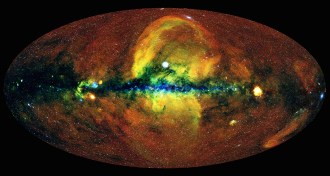 Space
SpaceThis is the most comprehensive X-ray map of the sky ever made
A new X-ray map of the entire sky, using data from the eROSITA telescope’s first full scan, looks deeper into space than any other of its kind.
-
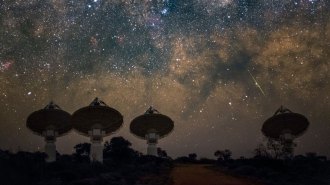 Space
SpaceHalf the universe’s ordinary matter was missing — and may have been found
Astronomers have used fast radio bursts as cosmic weigh stations to tease out where the universe’s “missing matter” resides.
-
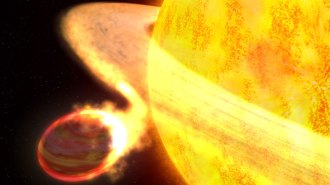 Space
SpaceRed giant stars that eat planets might shine less brightly
Some stars may shine less brightly after ingesting a planet. That finding, if confirmed, could have implications for calculating cosmic distances.
-
 Physics
PhysicsHow slime mold helped scientists map out the cosmic web
Tapping a similarity between a slime mold’s lacy web and the vast threads of matter that connect galaxies, astronomers visualized the cosmic web.
-
 Physics
PhysicsPhysics Nobel awarded for discoveries about the universe’s evolution and exoplanets
Three scientists share the 2019 Nobel Prize in physics for revealing what makes up our cosmos and for finding the first planet orbiting a sunlike star.
By Emily Conover and Lisa Grossman -
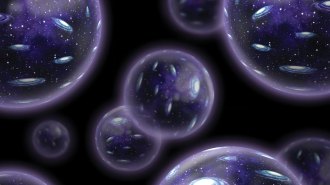 Cosmology
CosmologyA new book explores how the concept of the multiverse has evolved
Tom Siegfried, author of ‘The Number of the Heavens,’ discusses what the multiverse has meant to great thinkers throughout history.
-
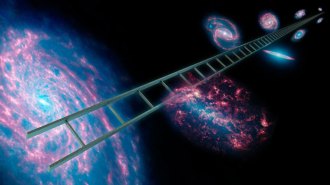 Cosmology
CosmologyDebate over the universe’s expansion rate may unravel physics. Is it a crisis?
Measurements of the Hubble constant don’t line up. Scientists debate what that means.
-
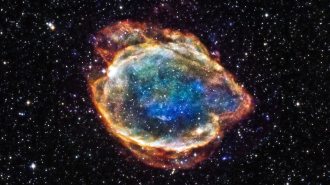 Cosmology
CosmologyScientists still can’t agree on the universe’s expansion rate
A mismatch in measurements of how fast the universe is expanding might not be real, a study hints.
-
 Chemistry
ChemistryCarbon plays a starring role in the new book ‘Symphony in C’
In Symphony in C, geophysicist Robert Hazen explores carbon’s ancient origins, its role in life and its importance in the modern world.
By Sid Perkins -
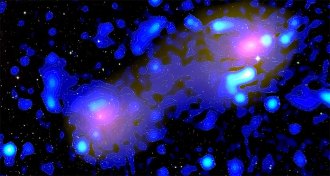 Astronomy
AstronomyIn a first, magnetic fields have been spotted between two galaxy clusters
The discovery of magnetic fields in the gaseous filament between two galaxy clusters suggests that some large cosmic structures are magnetized.
-
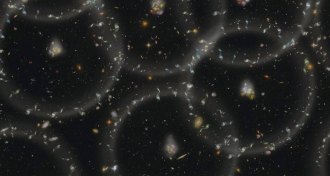 Cosmology
CosmologyHidden ancient neutrinos may shape the patterns of galaxies
The gravitational pull of subatomic particles born in the universe’s first second seem to influence how galaxies cluster into rings.
-
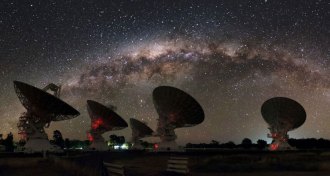 Cosmology
CosmologyA cosmic flare called the ‘Cow’ may reveal a new way that stars die
A burst of light from far away may have been an odd type of exploding star or a white dwarf being eaten by a black hole.